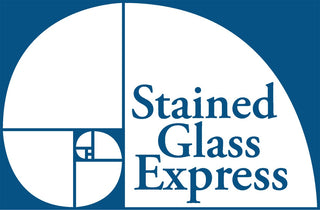Brief History of Fused Glass Art
According to some historians, there is archeological evidence of the Egyptians using fused glass to create beads and jewelry in 2000 BCE. It was the main technique used to create small glass object until the creation of the blowpipe in Aleppo sometime around 25 BCE to 45 AD. Until much more modern times, fused glass was overlooked by the artisans of the Medieval Ages, as well as the renaissance. It has only been since the 1960's in the United States that fused glass as a hobby, and even fine art form has reemerged. It has gotten so popular in today's glass crafting that glass manufacturers are coming out with glass made specifically for kiln work.
What do we at Stained Glass Express offer for you?
Here at Stained Glass Express, we know kilns are expensive to purchase, pricey to maintain, and they're BIG! While we do carry some kilns for purchase (CHAMPXL), our Glass Academy actually has space in four kilns for students and for purchase from the public. $16.00 per square foot fired, and an additional optional charge of $3.00 for Bullseye ThinFire Paper, for a smooth bottom for your project. We have kiln programs for 90 COE and 96 COE, as well as for whatever molds you are interested in using.
We also have many opportunities for someone to come in and try! We offer many Fun Night Out fusing classes, as well as our Creation Station, which features up to ten different crafts for all ages (Children should be supervised but all projects are appropriate for ages 5+).
What to think about when creating a fused glass project?
What is the Coefficient of Expansion (COE) of your glass? Will your pieces be compatible?
Glass with different COEs will not behave and will not safely fuse together. When making your project, please bear in mind that Bullseye Glass is made as 90 COE, while Oceanside (previously Spectrum) and Wissmach Fusible glass are made as 96 COE. There are even likely instances where Oceanside and Wissmach will not properly fuse to each other. For the longevity of your project, we would not recommend using different glass manufacturers together, even if the claimed COE is the same.
The Six Millimeter Rule
The 6 mm rule explains that glass heated to a full fuse will flow until it reaches a thickness of approximately 6 mm (¼˝). To maintain this thickness, we recommend using two layers of 3 mm glass for the base plate. This keeps the final thickness around 6 mm. Adding more layers will cause the plate to spread beyond its initial boundaries. Conversely, using only a single 3 mm (1/8˝) base layer will cause the edges to pull inward, forming sharp points along the perimeter. Below you'll see an image describing the above. Each piece started with the same starting area, and with the exception of the unfused piece, they are just about all 6mm thick.

It is often better to fuse your glass "low and slow."
If your glass heats up too quickly in the kiln, it is likely that air may be trapped between your top and bottom layers of glass, especially if frit or stringers were used in between. If you set up your kilns to raise in temperature slower, as well as allowing time to "soak" at about 1150-1250 °F for 45-60 minutes. This gives time for the air to escape before the edges of your project have closed and sealed. In our classroom, we refer to this as a "bubble squeeze." It is built into the majority of our kiln programs.
What is the correct kiln program to use for my project?
This is a difficult question to answer, as every kiln may heat up a little differently. When working in an unfamiliar kiln, see if you can either make samples before you fire your piece, or maybe the owner or previous owner of the kiln has some. Here are some sample fires from two of our kilns, Lily and Bertha.

This is what we at Stained Glass Express refer to as a tack fuse. The purpose of this type of fuse is to adhere without changing the shape and edges of the glass too much. As I said, all kilns are different, Lily's tack fuse ends up with much sharper edges then Bertha's piece ended up.
